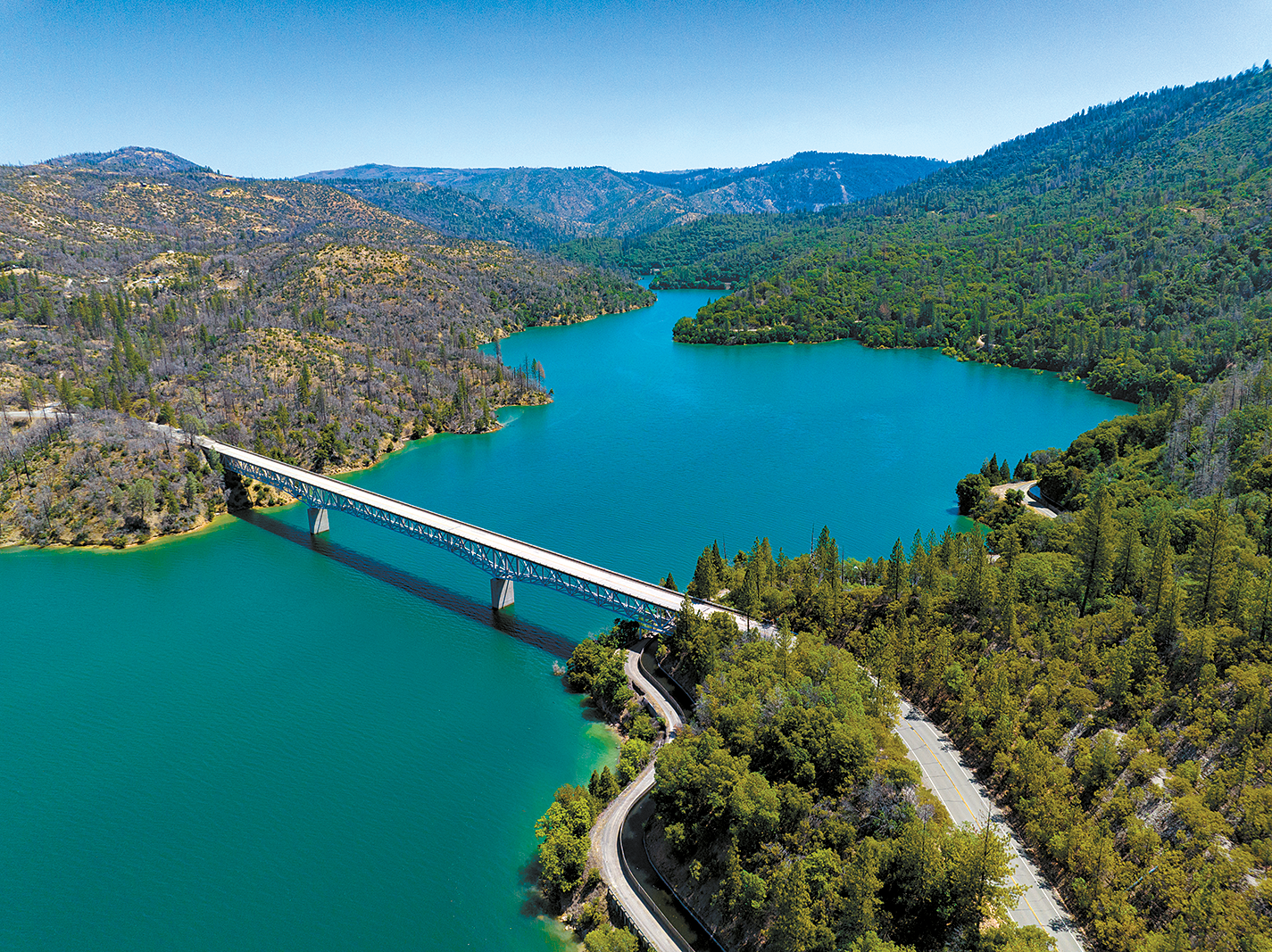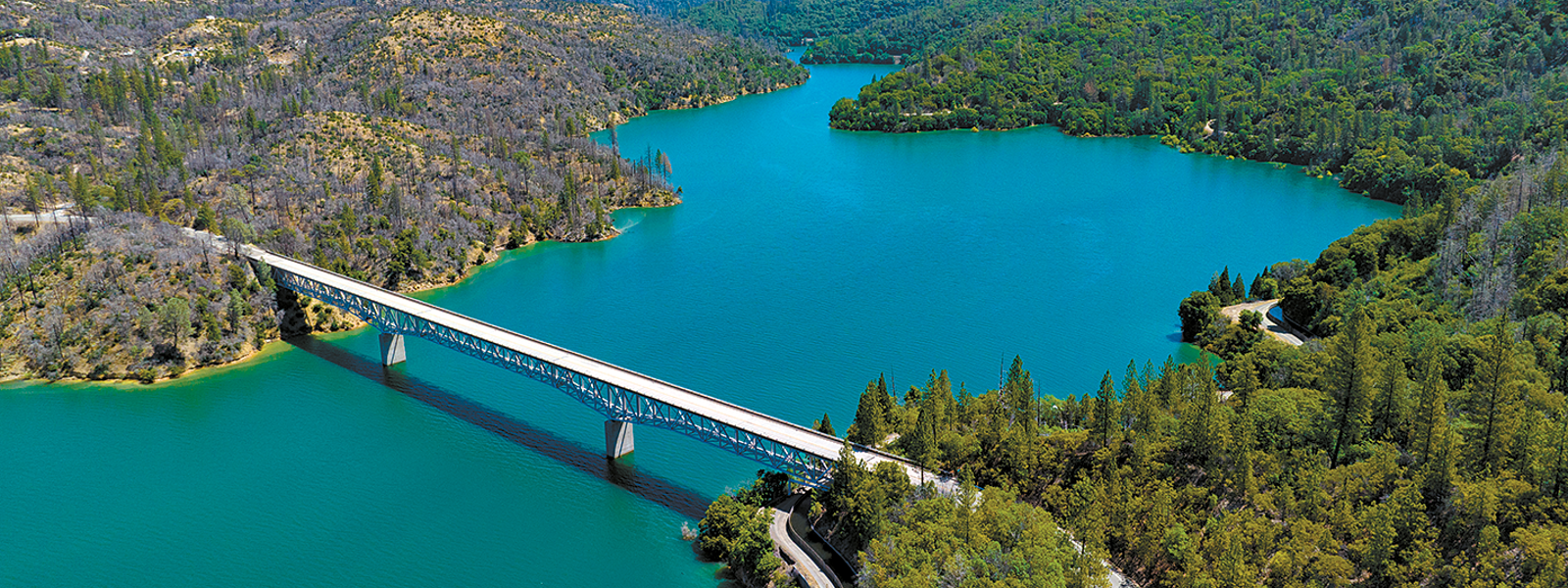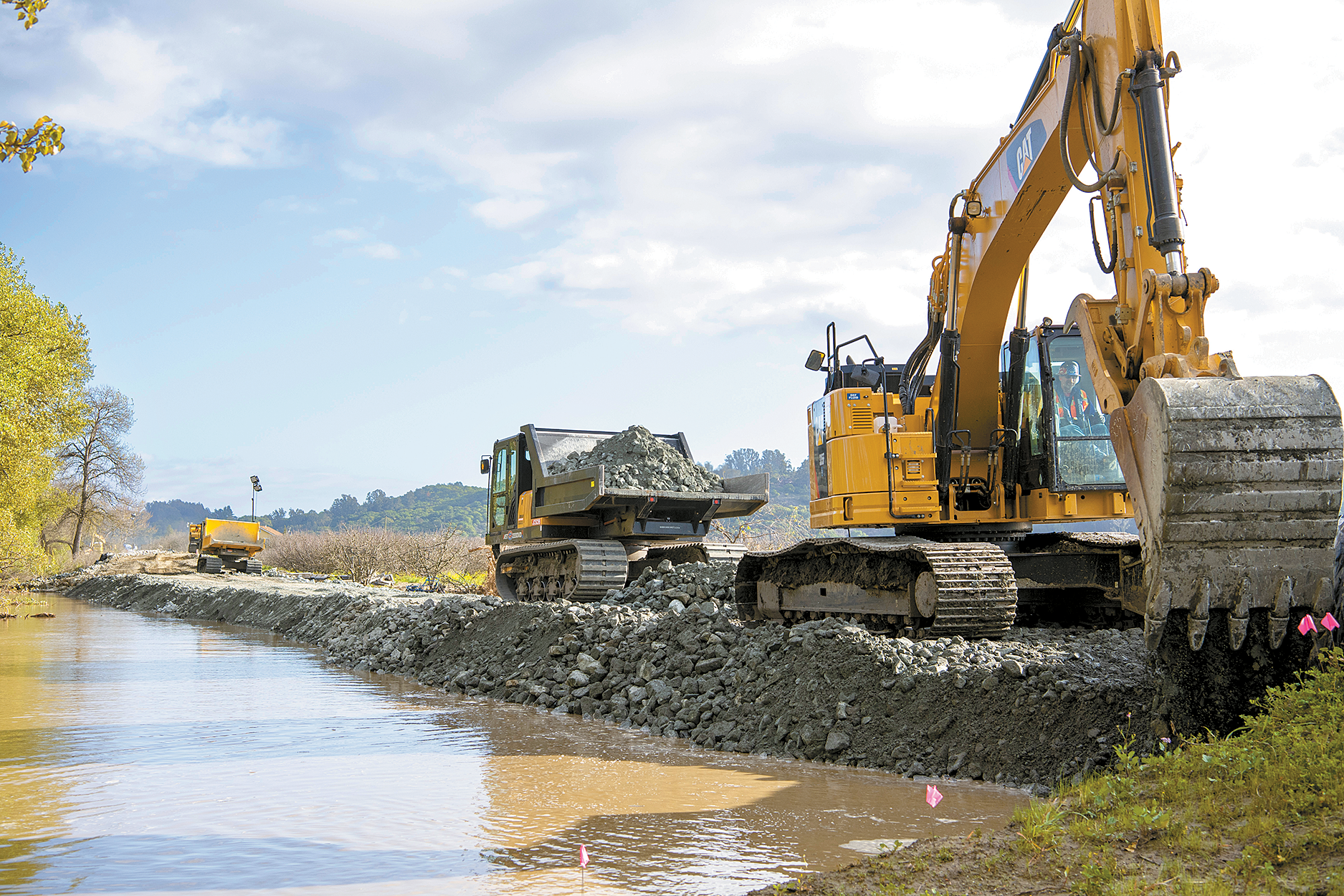El Niño lifts hopes for more water, stirs fears of flooding

The water level of Lake Oroville, shown on July 3, rose more than 240 feet as a result of 2023 storms. Officials say a continuing El Niño pattern could mean more wet weather over the next year.
Photo/California Department of Water Resources


Photo/California Department of Water Resources
By Peter Hecht
California reservoirs are brimming at historic levels after a water year described as akin to a “miracle.”
Lake Shasta, the largest reservoir in the federal Central Valley Project that provides water to over 3 million acres of farmland, stood last week at 131% of its historic average water level. Lake Oroville, the cornerstone of the State Water Project that supplies water to 27 million people, stood at 136% of its historic average after its water level rose by more than 240 feet.
The dramatic increases in surface-water supplies are the result of an El Niño weather pattern this year that brought drenching atmospheric river storms. It followed a La Niña pattern that delivered three years of searing drought, resulting in the fallowing of as much as 1.3 million acres of farmland.
With farmers and ranchers suddenly blessed with ample water supplies, state and federal officials said last week they expect to release water from reservoirs to create more water-storage space. That is because of fears of potential severe flooding from a predicted second consecutive El Niño year.
“The No. 1 operational priority is flood control,” said Levi Johnson, acting operations manager for the U.S. Bureau of Reclamation’s Central Valley Operations Office.
However, officials said an El Niño pattern doesn’t necessarily mean flooding or even assure a year of bountiful rain and water storage opportunities.
“It may not be wet, but it may not be as severely dry as some of the years we’ve seen recently,” said Michael Anderson, state climatologist for the California Department of Water Resources.
Anderson’s cautious observation came as state and federal officials previewed the water year that runs from Oct. 1 to Sept. 30 and discussed the 2022-23 water year that just ended.
The phenomenal year brought 33.56 inches of rain, 141% of the statewide average, with rain from October to March 153% of average. The state’s snowpack on April 1 was 237% of normal, only the fourth time it topped 200% of normal since 1950.
“This was, I think, as close to a miracle year as you can get after following just the intensity of drought conditions,” DWR Director Karla Nemeth said.
She added, “We’ve always had intense variability in California. But the suddenness of the shift from very extreme dry to very extreme wet is something that we think needs additional research to understand how changes in the climate may have played a factor or not in that extreme shift.”
Ernest Conant, regional director for the U.S. Bureau of Reclamation, said federal officials are “pleased to go into this new water year in a much better place than we’ve been in the last few years.”
Conant said, “Both our reservoirs as well as groundwater basins were able to be replenished nicely with excess flows from the winter storms.”
Ted Craddock, deputy director of the State Water Project, said the SWP was able to provide 100% water allocations this year to 29 water agencies. He noted, “This is the first time that’s happened since 2006, and we were also able to provide an additional 400,000 acre-feet of water on top of that 100% allocation, which is really good news for water supply in the state.”
Paul Gosselin, the state’s deputy director for sustainable groundwater management, said storms this year helped replenish the state’s depleted aquifers by more than 1.2 million acre-feet through groundwater recharge efforts.
But the state’s improved water picture came at the cost of massive agricultural losses from flooding this year.
In Monterey County alone, officials estimated damage to crops and farm infrastructure at $600 million. Hundreds of millions of dollars in agricultural losses were also reported in Kings and Tulare counties as storms resurrected the dormant Tulare Lake, submerging farmlands and dairy properties.
State and federal crews are racing to make repairs in anticipation of more storms to come.
The U.S. Army Corps of Engineers is rebuilding three sections of the Pajaro River levee that failed in March, flooding the town of Pajaro and Monterey County farm fields.
State officials said they are investing $52 million for levee repairs and local flood control projects in the ensuing months in hopes of preventing additional flooding in the next water year.
Gary Lippner, DWR’s deputy director of flood management and dam safety, said the potential of new flooding “keeps me awake a little bit at night going into an El Niño year.”
Last month, the National Oceanic Atmospheric Administration said there is a 95% probability that El Niño conditions will persist through January to March of 2024, with a 71% likelhood of strong weather impacts.
Nemeth said it is “absolutely critical” for water officials to keep a close eye on “long-duration forecasting” to plan for potential flood emergencies.
Yet Craddock of the State Water Project said officials also must plan “for both dry and wet scenarios.” He said that means meticulous decisions on adjusting reservoir levels, whether releasing water for flood control or holding it back “in the event conditions turn dry.”
After dealing with California’s driest years on record from 2020 to 2022, Nemeth said the state was blessed with water abundance this year. But she said there were also abundant challenges in managing the water deluge.
“Mother Nature really helped us out, and she did help us out in a really, really big way in certain parts of the state,” Nemeth said. “But there are always ways in which Mother Nature can throw us a curve ball, and we shouldn’t expect that necessarily again. There’s a lot of work to continue to be done, particularly when it comes to flooding and protecting our communities.”
(Peter Hecht is chief editor of publications for the California Farm Bureau. He may be contacted at phecht@cfbf.com.)




